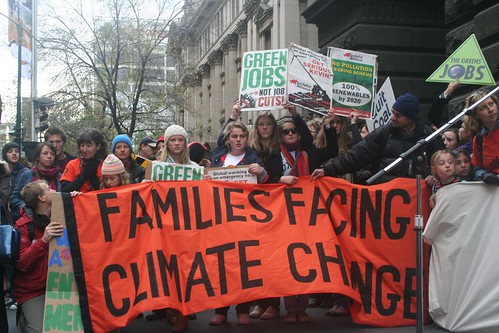Citizen’s charter
A whole lot of measures to improve the governance have taken
place in the last decade. The citizen’s charter, right to information,
grievance redressal mechanisms etc are some of the prominent ones.
What is aim of the citizen charter?
In earlier times, citizen’s were separated by rigid walls
from the government functioning. This leads to alienation of people from the
bureaucracy. Many people have commented “bureaucracy exists to serve itself”.
The citizen charter is a measure to change this ‘villain role’ of bureaucracy
and make it more citizen’s centric. The citizen charter aims to bring
transparency, accountability and responsiveness to the system.
Why we need it?
In earlier times, citizens were in dark about the services
or schemes given by government departments.
Eg:
1991: Mohammed a 60
year old law abiding citizen goes to village office to get a nativity
certificate. He arrives at 10.30 am at the office, to be received by empty
chairs. At around 11.00 an officer walks
in. Mohammed runs to him to ask about the certificate. The officer says “Sir’ji
is on leave… You can submit application at table 2.” Mohammed stares helplessly
at the table 2 and the empty chair which in turn stares at Mohammed. After 3
hrs Mohammed leaves sad at heart and empty at stomach.
After few visits he manages to meet the officer at Table 2
and give him his application. The stone faced officer takes the application and
sits on it for a month. Mohammed is clueless about when his application will
hatch to give him the certificate…Mohammed is waiting for “Sir’ji to arrive
from leave”
2013: Mohammed’s son Beeran walks to the same office. Beeran
sees a big board where the list of services and the time in which these
services will be granted is shown. He is also informed about the officers
present in that office on that particular day. He is greeted by a “May I help
you" board. He asks to the smiling officer about his certificate who explains the time,cost, format etc before directing to the correct desk. He is
shown the table 2, where an officer enthusiastically receives his application
and gives him a receipt. He is told that the application will be promptly
processed(within specified time) and given to him…. Beeran leaves the office with a smile…He gets his
certificate in the specified time without any hassles….
About the concept of citizen charter
This idea was started by John Mayor in Uk (1991). The Tony
Blair government gave it a big push by the initiative “Service First”(1998).
The basic objective of the Citizen's
Charter is to empower the citizen in relation to public service delivery. The six
principles of the Citizen's Charter movement(UK) as originally framed were:
1 Quality: Improving the quality of
services;
2 Choice: Providing choice wherever
possible;
3 Standards: Specify what to expect
and how to act if standards are not met;
4 Value: Add value for the taxpayers'
money;
5 Accountability: Be accountable to
individuals and organisations; and
6 Transparency: Ensure transparency in
Rules/Procedures/Schemes/Grievances
The Tony Blair govt (UK) later elaborated this concept to
nine principles of service delivery..
• Set standards of
service
• Be open and provide
full information
• Consult and involve
• Encourage access and
the promotion of choice
• Treat all fairly
• Put things right when
they go wrong
• Use resources
effectively
• Innovate and improve
• Work with other providers.
In India, the concept of citizen charter was added to
create transparency in the implementation of programmes/schemes and services.
What are the components of the citizen charter..
What are the headings you see there…. Vision… Mission etc…
The vision points to the direction in which India Post
will move. Mission shows its aims,objectives etc. Thus seeing this charter both
employees and the citizen will get the info about postal department. What you
just read in the indiapost website are components of citizen charter.
To list them down..Components
of a Citizen’s Charter are (the india post website has all these components..)
i. Vision and Mission Statement;
ii. Details of Business transacted by
the Organisation;
iii. Details of clients;
iv. Details of services provided to
each client group;
v. Details of grievance redress
mechanism and how to access it; and
vi. Expectations from the clients
Look this website by government of kerala (click here).
The certificate name,purpose, the time frame, the officers in charge etc are
listed in detail. The Kerala government has also posted the certificate format
in its websites. All these are directed towards creating “effective efficient
and responsive” governance.
The Indian citizen Charters are
expected to incorporate the following elements :-
(i) Vision and
Mission Statement
(ii) Details of
business transacted by the organisation
(iii)Details of clients
(iv) Details of
services provided to each client group
(v) Details of grievance redress mechanism and how
to access it
(vi) Expectations from the clients. Here the last one “expectation from clients”
is an Indian innovation.
The Indian government has a website fully for the purpose
of citizen charter…
Visit it…(click here). The principles
of citizen charter are given in the website which are listed below…
• Published Standards
• Openness and
Information
• Choice and
Consultation
• Courtesy and
Helpfulness
• Redress when things
go wrong
• Value for money
As far as India is concerned, the citizen charter is a good
move to bring the benefits to the citizens. As more and more citizens become
literate, this will bring change to the way business is conducted in our
offices. The RTI along with citizen charter can bring much change to India’s
offices.















